|

|
|
Here
are some pictures I took on a visit to Mottisfont Abbey in
Hampshire.
The
gardens are famous for their large collection of old fashioned
roses.
I
visited in the first week of June. Although many of the border
plants and some of the roses were
in flower I think it was actually slightly too early to see the
gardens at their very best. Probably mid-June to mid-July would be the
peak time to see this garden. However
there was still plenty to see.
|
 |
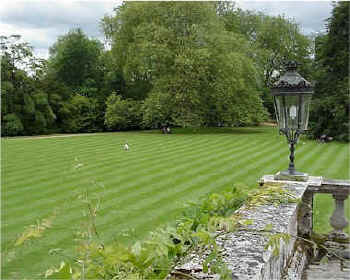
|
|
This
is the main house. In the 13th century a monastery was founded on
this site. It survived until the 16th century when King Henry the
Eighth ordered the closure of many orders of monks, including this
one. The original cellars survive, but the rest of the house was
added in the following centuries, when it was privately owned.
In
the 20th century the house was taken over by the National Trust and opened to the
public. I was so impressed with the marvelous striped lawn that
I took two pictures. The white dot in the middle of the
lawn is a little child who had crawled there from under the
tree, where her parents were sitting.
|
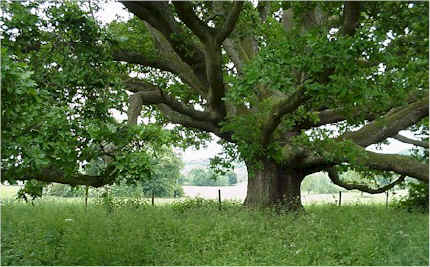 |
|
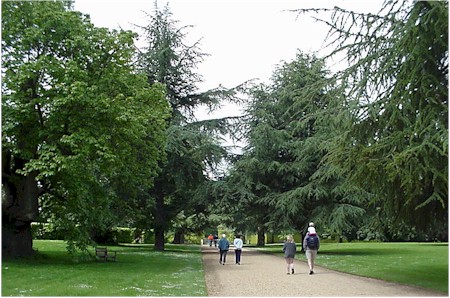
The house
is surrounded by lawns and gardens. At one side of the house a natural spring flows into a stream that
used to power a watermill. Beyond these gardens is an
area of parkland with some magnificent mature trees.
|
 |
|
If
we follow this path through the trees we come to a wonderful old walled garden.
From the outside you cannot imagine what could be inside the high walls.
But once you approach this arch you can catch a glimpse of the
interior.
Nowadays the walls enclose a beautiful garden full of herbaceous plants and
roses, but originally it was the kitchen garden, growing all the
fruit and vegetables for the house.
|
 |
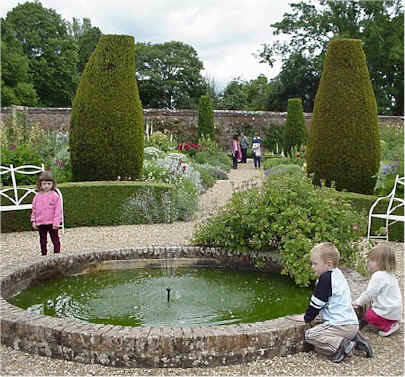 |
|
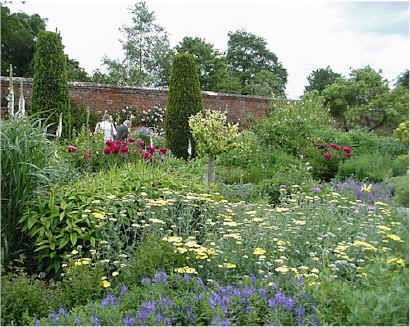 |
So, here
we are inside the walled garden. It is laid out in a geometric pattern with lawns and beds of
flowers, divided by paths and trees.
Right in the centre is this small fountain which is fascinating
these children. Although the walls are very old, the garden in it's
present form was only established in 1972.
|
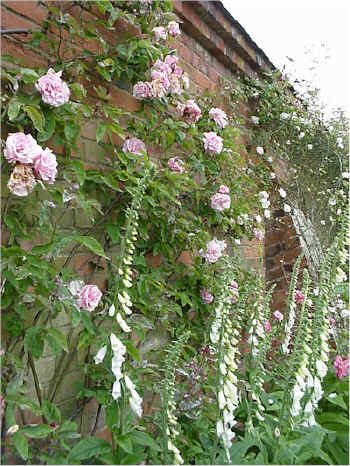
|
| One
of the main attractions of these gardens is their collection of
old fashioned roses. They have about 350 varieties here. The aim
of the garden is to keep a collection of these older varieties of
rose and preserve them for the future.
Although these
roses look exquisite and often have a wonderful fragrance, many of
them only flower once a season, so they are less popular for
smaller gardens, where people prefer roses that flower several
times over the summer.
|
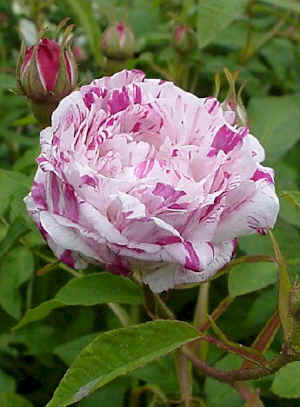 |
|
I
loved this stripey 'Gallica' rose.
|
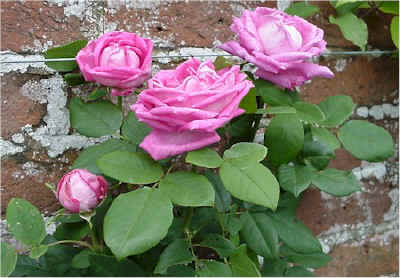 |
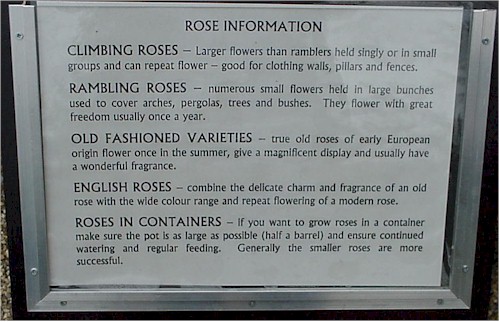 |
|
Next
to the rose garden there is a shop where you can purchase roses and
other plants to grow in your own garden. This sign clearly explains the
differences between each type of rose on sale. I wanted to buy
lots, but managed to restrain myself on this occasion.
|
 |
|
Low
box hedging lines some of the paths. It frames the flower borders nicely
and creates a slightly formal look in the garden.
|
 |
|
These
peonies and foxgloves were in full bloom. Peonies are beautiful
flowers but they take up quite a bit of space in the garden and
flower for such a brief time. Still, they are lovely to have if
you have space in your garden.
|
 |
|
A
pretty section of border. The wooden poles are not there to hold
up the wall, but to act as supports for some climbing roses and
clematis.
|
 |
|
This
path has been provided so that visitors can wander right into this
wide border and smell the roses and lavender. In this part of the
garden there are many varieties of lavender. The little hut you
can see in the distance is built into the corner of the
wall. A seat is provided so that you can sit and shelter from the
sun, or the rain!
|
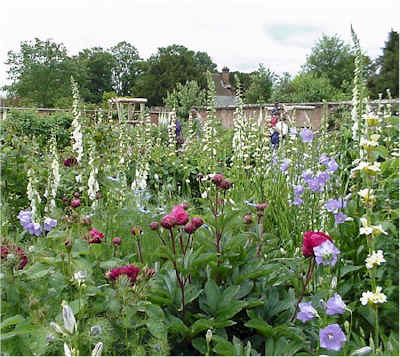 |
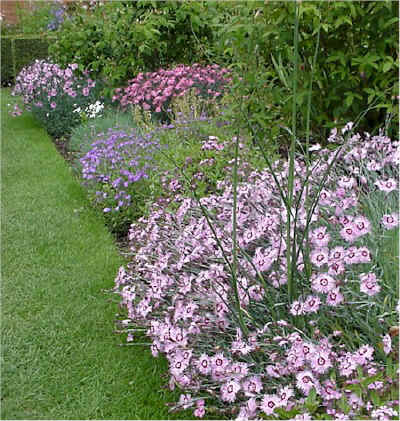 |
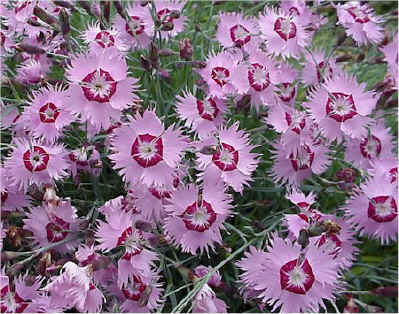 |
|
Various
varieties of pinks were being used to provide colour at the front of some of the
borders. The scent was gorgeous. They are a traditional cottage garden
flower which you often see in gardens like this.
|

|

|
|
Running
right through the centre of the rose garden is this stunning series of arches
covered in these delicate pinky white roses. So sweet. Not many were in
flower, so maybe some of the arches contain other varieties of roses. I
could not tell.
|
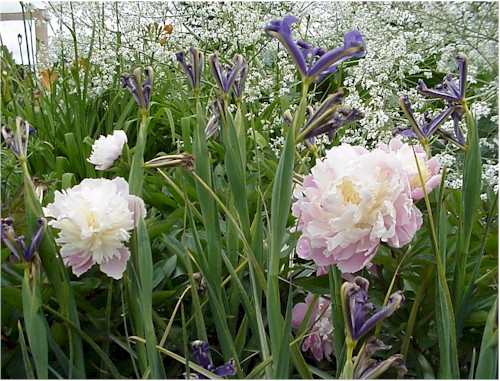
|
|
To
complement the white roses these nearby beds were planted with beautiful
pale peonies. Aren't they a wonderful colour? And they look so pretty
with these purple irises.
|

|
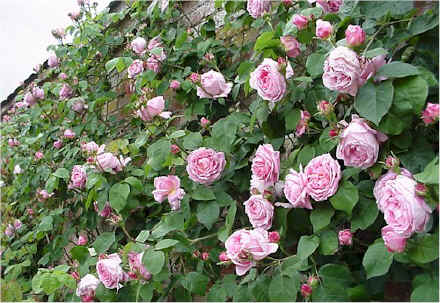 |
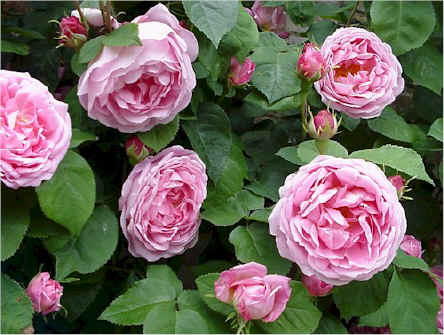 |
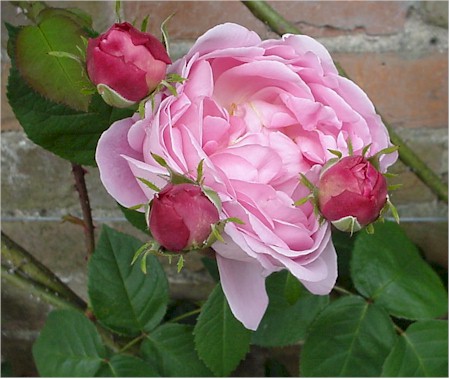 |
|
This was
the prettiest rose I found in the garden. It was called 'Constance Spry'
and was growing vigorously up this wall. People were taking it in
turns to have their photograph taken sitting on this lovely old wooden
seat. I love the colour of the rose and the way the buds cluster around
the mature flowers. It also had a very attractive scent. I wanted to
take it home with me.
|
|
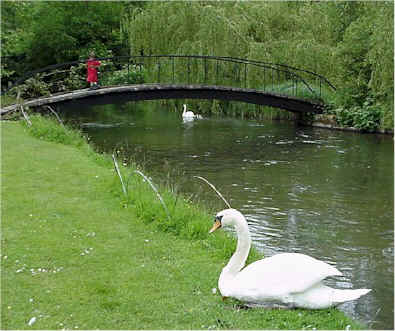
|
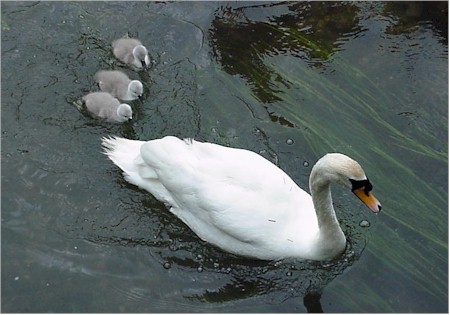 |
|
Close to
the house this male swan was sitting peacefully enjoying the sunshine.
He seemed totally unconcerned about the people walking past him. However
he was keeping an eye on his family who were swimming nearby. The female
was taking her three babies for a swim. We call baby swans 'cygnets'.
|
|
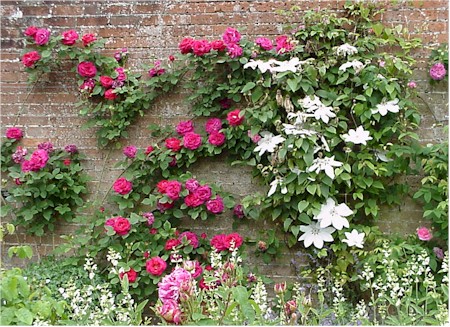
|
|
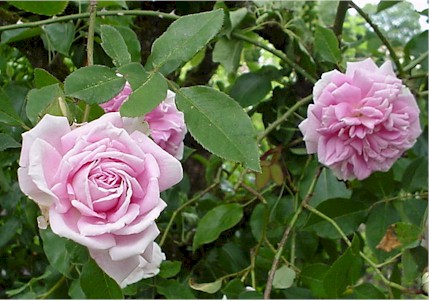
|
|
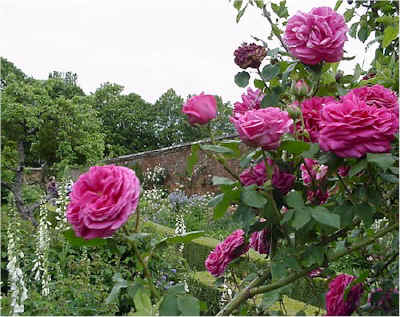
|
|
Some more
of the roses in the garden. In the top picture the red roses were being
grown with a white clematis. Roses and clematis are often grown together
as they flower at a similar time and their colours complement each
other.
|
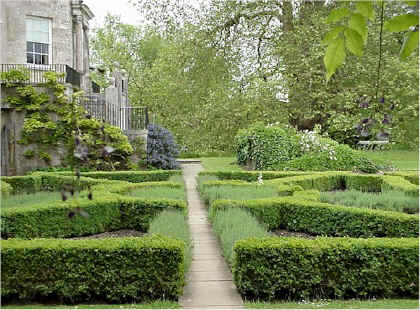 |
|
Beside
the house I noticed this formal 'knot' garden. It was composed of a
mixture of box hedging and lavender. The centres of each section were
empty, but I expect the gardeners were about to fill them with summer
bedding plants. The path you can see leads directly to the river.
|
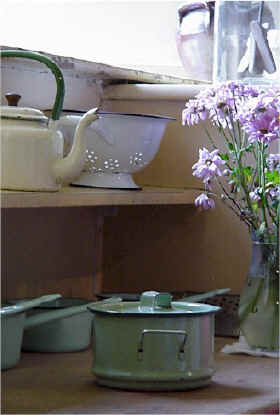 |
|
Before
visiting the riverside I first popped into the tearooms for a cup
of tea. It is located in the basement of the building, in part of
the old kitchens. This room has been left as it was in the 1930's
and the shelves have been decorated with old kitchen
utensils. They are not for sale! I can, however recommend the home
made cake and the scones looked quite tasty........
Next to the
tearooms was a more formal restaurant where I could see that
people were queuing to get a table for lunch. I looked at the menu
and it was full of traditional recipes using local ingredients,
like the local trout and also rose-petal ice cream. You can
also purchase rose-petal wine in the shop.
|
 |
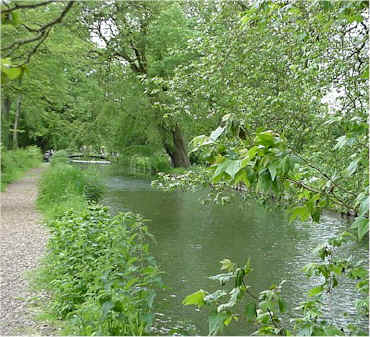 |
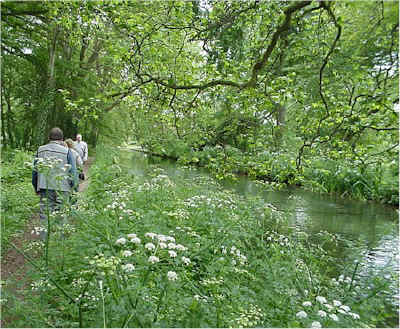 |
|
On one
side of the house this clear stream flows away into the distance.
There is a circular walk that you can follow, along one bank of the
river, across a bridge and back along the other river bank. After all
the spring rains this walk was a vision of green.
|
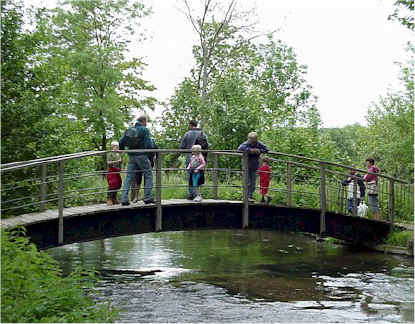 |

|
|
|
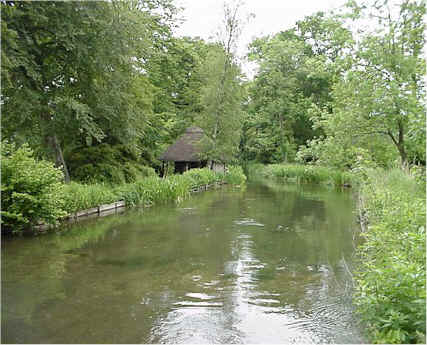
|
|
|
Can you
see the little hut, nestling on this bend in the river? It is a
fisherman's hut, dating from the 19th century and it has a thatched
roof. This area of the countryside is famous for it's wonderful fishing
rivers.
|
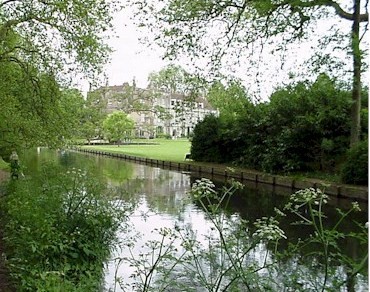 |
|
|
At the end
of the path the house once more comes into view. This is the end of our
tour of these gardens. If you want to visit, Mottisfont Abbey is owned
by the National Trust. It is located in Hampshire, in a very pretty area
of countryside near the town of Romsey. To find out opening times you can
visi the National Trust website. www.nationaltrust.org.uk
|
